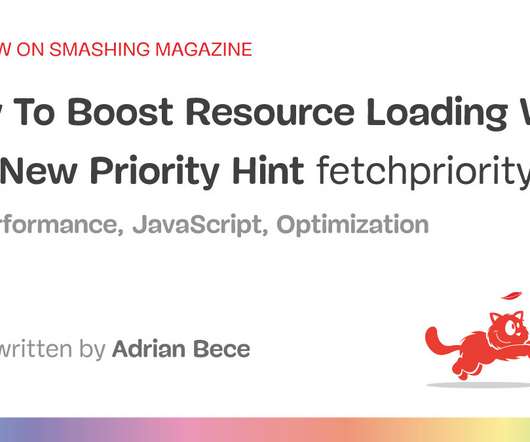Meet Hydrogen: A React Framework For Dynamic, Contextual And Personalized E-Commerce
Smashing Magazine
NOVEMBER 8, 2021
On top of this foundation, we add layers of caching, prerendering and edge delivery optimizations — not the other way around. Hydrogen fuels dynamic commerce by uniting React Server Components, streaming server-side rendering, and smart caching controls. Stay tuned for more in 2022! Large preview ). More after jump!














Let's personalize your content